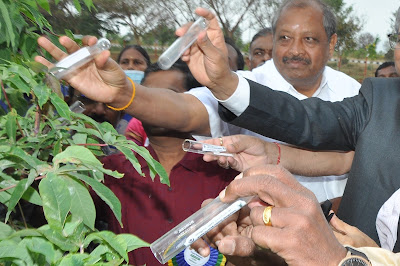Personal musings about studies on the pink bollworm

19 August 2022 Why is the PBW a key pest of Bt cotton? This question often comes to my mind. And it may be bothering you too. The fact that it is the only insect pest that has evolved resistance to protein toxins in the Bt cotton and that too only in India, sets in a tone for our failure to manage it and know of its key pest status in the late 2000s and early 2010s. The indication of incidence of the PBW larvae of 3 rd instar, about 2-3 mm size and pinkish in colour in Bt cotton in Delhi was our initial observation during 2009 and 10, when we saw them in the cut green bolls. Prior to that we just hardly saw them or saw few of them less than a mm size which did not grow well and hence, their impact in damaging bolls did not become clear. We started working on the PBW resistance monitoring since mid-2000s. We requested colleagues for infested bolls from different localities then onwards and started rearing PBW emerging from the infested bolls. Even some of the green bolls wh...
